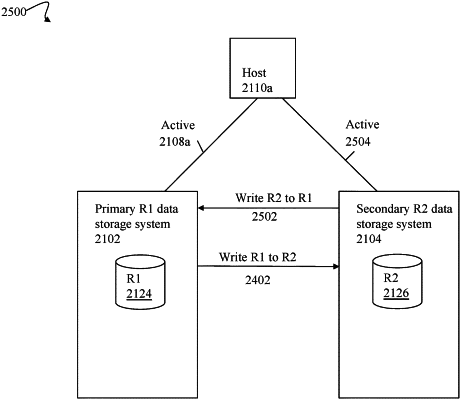| CPC G06F 11/1092 (2013.01) [G06F 3/067 (2013.01); G06F 3/0619 (2013.01); G06F 3/0659 (2013.01); G06F 3/0689 (2013.01); G06F 11/0772 (2013.01); G06F 11/1658 (2013.01)] | 18 Claims |

|
1. A computer-implemented method comprising:
configuring a stretched volume from two volumes of two data storage systems configured as a cluster, wherein each of the two volumes is included in a different one of the two data storage systems, wherein the two volumes configured as the stretched volume are exposed to a host as a same logical volume having a same first identifier over a plurality of paths from the two data storage systems, wherein the two volumes are configured for bidirectional synchronous replication between the two data storage systems whereby a write directed to the stretched volume received at any one of the two data storage systems is synchronously replicated to the other one of the two data storage systems of the cluster;
determining, while write data is replicated between the two data storage systems in accordance with the bidirectional synchronous replication, that a first of the two data storage systems is unhealthy; and
responsive to determining that the first data storage system is unhealthy while write data is replicated between the two data storage systems in accordance with the bidirectional synchronous replication, performing first processing including:
disabling the bidirectional synchronous replication between the two data storage systems; and
notifying, by the first data storage system, a second of the two data storage systems that the second data storage system is selected as a single survivor system to service I/O requests directed to the stretched volume without replicating write requests to the first data storage system.
|